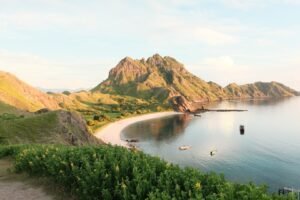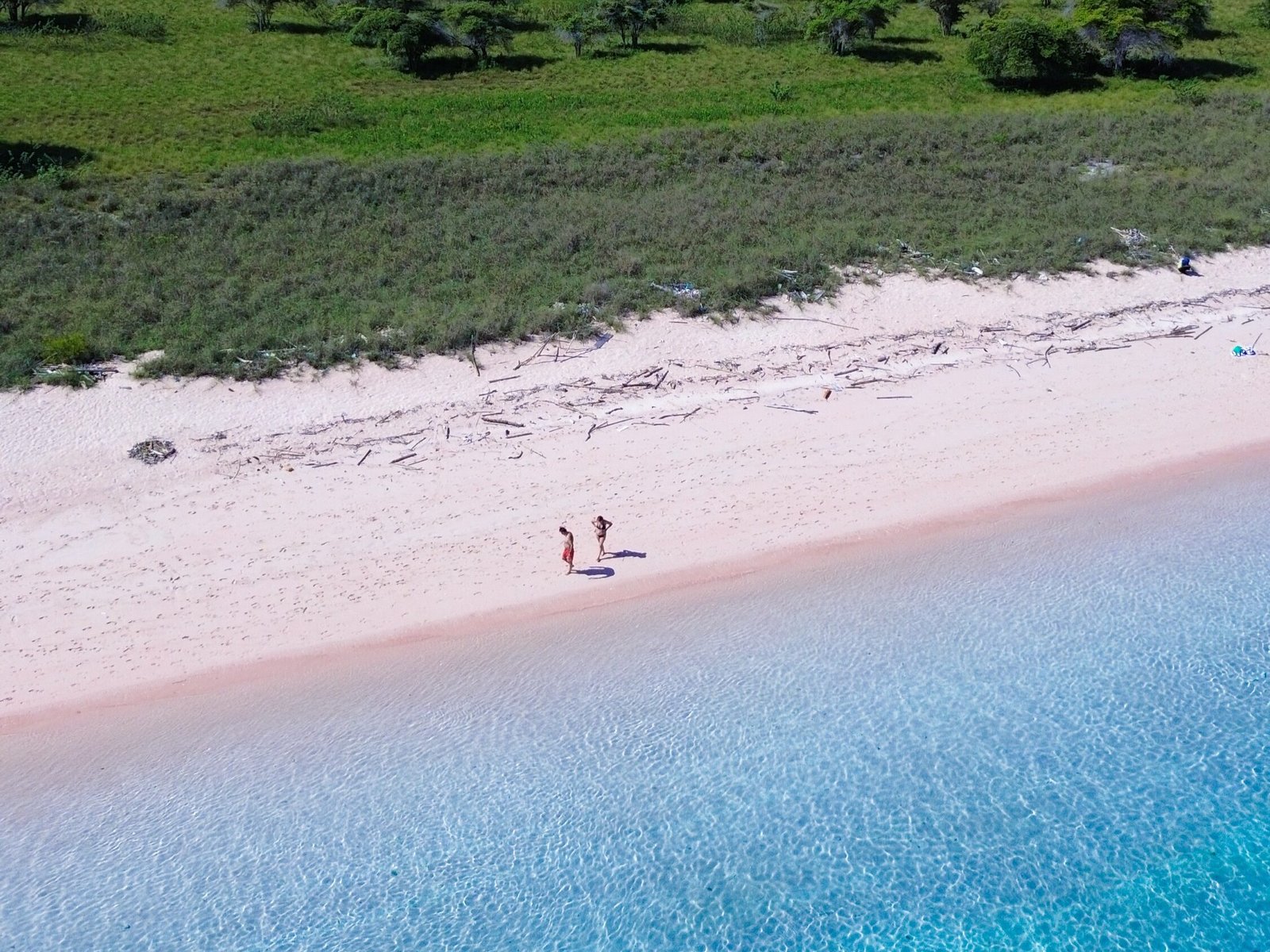Among the dazzling coastlines of Komodo National Park lies one of nature’s rarest wonders — Pink Beach, a stunning shore painted with hues of soft blush and coral red. There are two Pink Beaches in the park: one located on Padar Island and the other just in front of Loh Liang Resort on Komodo Island. Both offer jaw-dropping beauty and world-class underwater experiences, but the Pink Beach near Loh Liang is especially popular due to its accessibility.
Why Is It Pink?
The beach gets its name from the reddish-pink sand that lines the shore. This unique color comes from microscopic red pigments found in dead coral fragments, particularly from corals consumed by local fauna like cockatoos. These pigments are carried by waves to the shoreline and mix with white sand, creating a soft pink tint that seems to glow in the sunlight.
A Snorkeler’s Paradise
The waters at Pink Beach are calm, clear, and rich in marine biodiversity. Just a few meters from the shore, snorkelers can witness a vibrant underwater world full of life. The reef starts at a gentle slope and features both soft and hard corals, making it ideal for casual exploration.
You might encounter:
- Crinoids (feather stars)
- Frogfish and leaffish
- Mandarin fish (especially visible during late afternoon dives)
- Reef fish like angelfish, butterflyfish, and parrotfish
- Sand-diving creatures and even larger species like groupers and Napoleon wrasse
Diving at Pink Beach
Diving at Pink Beach is suitable for beginners and intermediate divers alike. Most dives begin from a buoy line, and the terrain gradually leads to deeper reef areas. Divers may be rewarded with encounters of rare and colorful marine species in this rich underwater ecosystem.
Note: If you’re hoping to spot a Mandarin fish, time your dive in the late afternoon when they are most active.
Important Visitor Guidelines
To preserve the fragile marine environment and ensure visitor safety, the following rules apply:
- No snorkeling during the lowest tide – to avoid damaging coral beds and for safety.
- Do not go ashore while snorkeling – stepping on the pink sand may disrupt the coral pigment and ecosystem.
- No diving at any of the 12 SPAGs (Spawning Aggregation Sites) during the full moon – this helps protect vulnerable breeding marine species.
Whether you’re diving deep into vibrant coral gardens or simply floating above with a snorkel mask, Pink Beach offers a surreal encounter with nature’s palette beneath the sea and on the sand.


